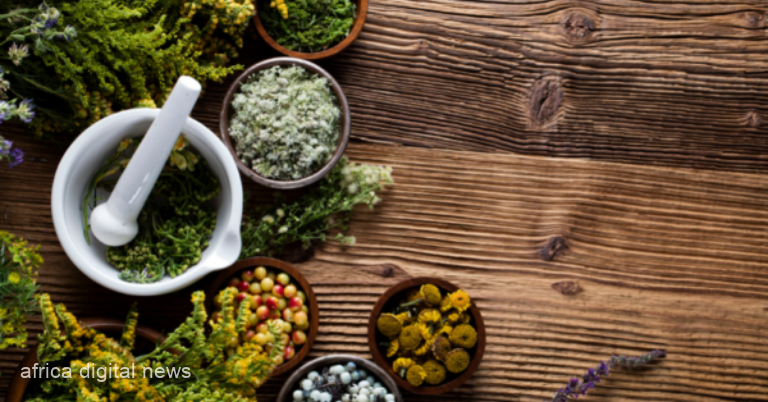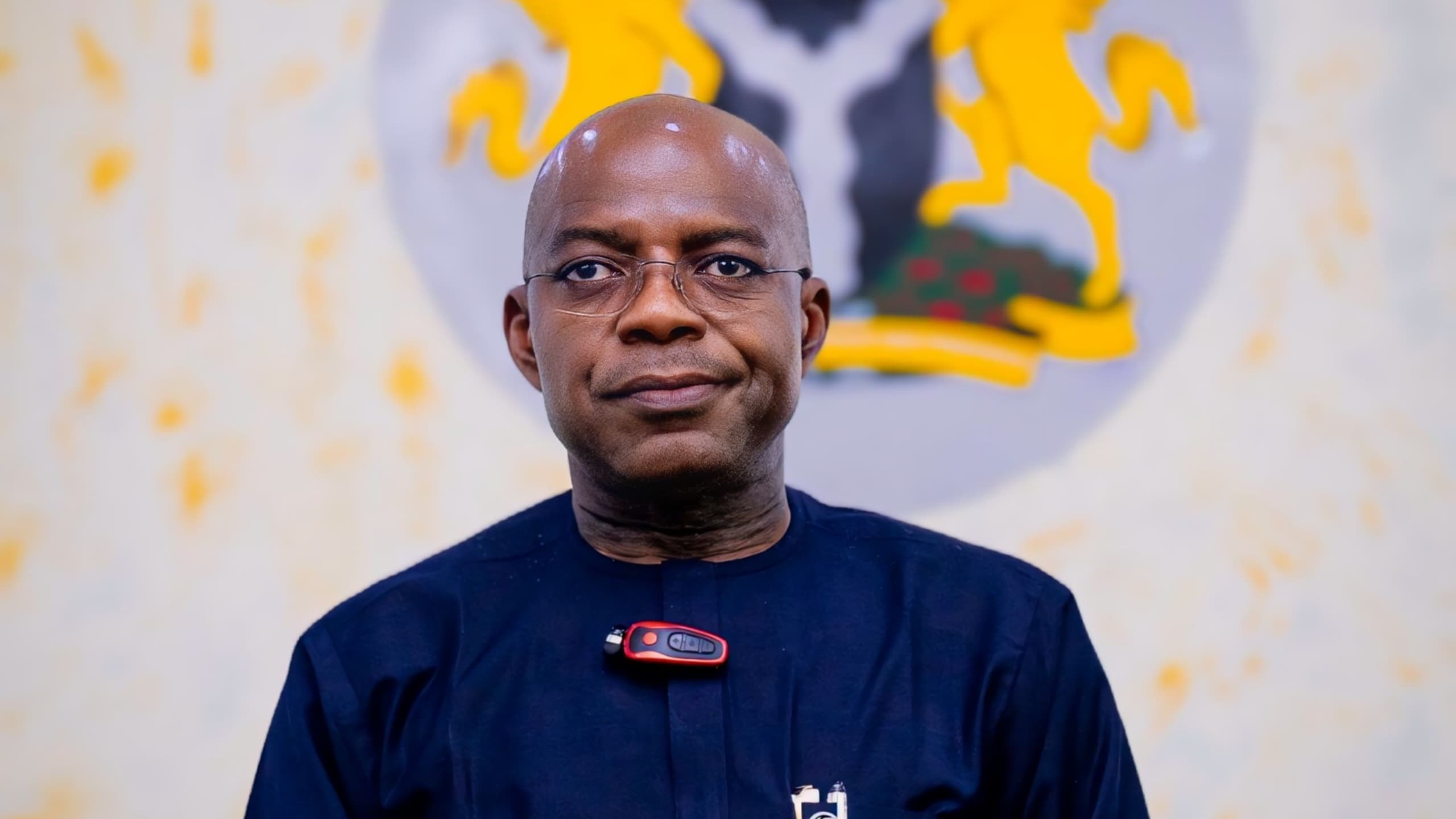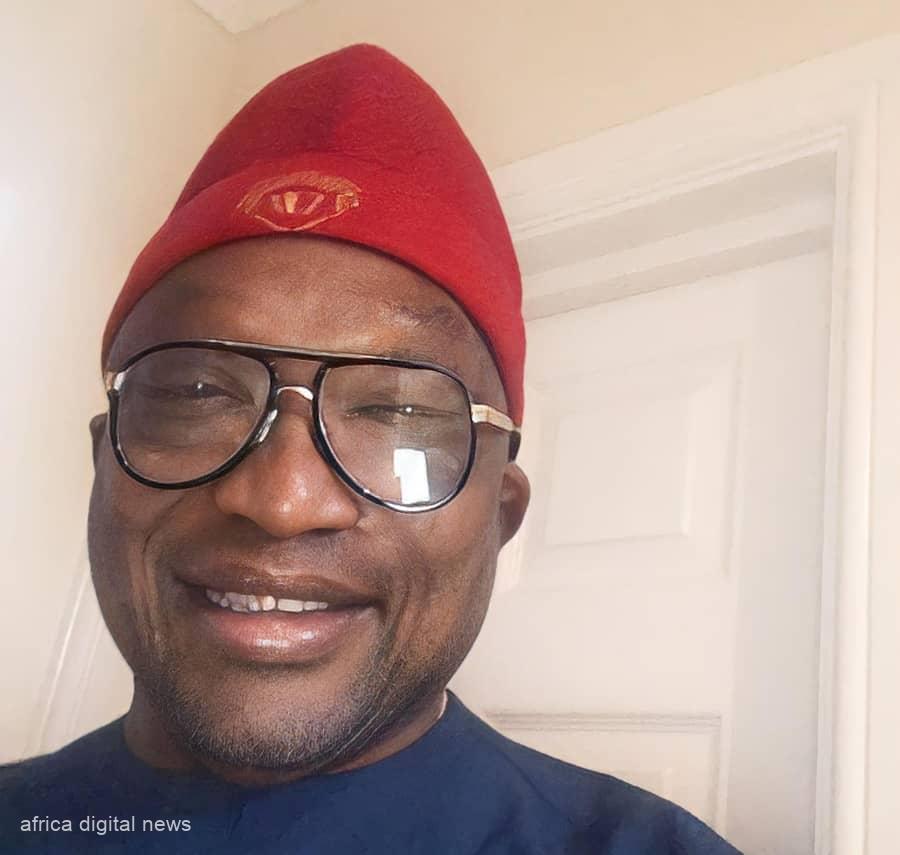In the heart of Africa, where the rhythmic beats of traditional drums echo through vast landscapes, lies a rich tapestry of ancient medical knowledge. This knowledge, cultivated over millennia and passed down from generation to generation, continues to shape the health and wellbeing of millions across the continent. But as the winds of change sweep through Africa, ushering in a new era of modern medical advancements, there emerges a unique confluence of traditional and contemporary practices. This dynamic intersection promises not only to revitalize African healthcare but also to offer insights to the global medical community.
From the dense rainforests of Central Africa to the arid Sahel of the West, traditional African medicine has been a pillar of community health. It isn’t mere folklore or antiquated practices but a sophisticated system built on a profound understanding of indigenous plants, herbs, and rituals. Rooted in a holistic approach, it doesn’t just address physical ailments but also caters to the emotional, spiritual, and communal aspects of health. This intrinsic bond between the individual, the community, and nature is what sets African medicine apart.
Yet, for much of the past century, there has been a palpable tension between traditional and modern medicine. Colonial legacies, coupled with rapid globalization, often cast indigenous practices in a shadow of skepticism and disdain. However, as the 21st century unfolds, a shift is discernible. There’s a growing recognition of the value and efficacy of traditional methods, leading to intriguing collaborations.
Modern researchers, drawn by the allure of Africa’s botanical wealth, are increasingly partnering with local herbalists and healers. Together, they’re unlocking the secrets of plants that have been used for ages to treat everything from malaria to snakebites. These partnerships are not one-sided. While traditional medicine offers a vast repository of knowledge, modern medicine provides the tools for validation, standardization, and widespread application.
The implications of this fusion are profound. By integrating the best of both worlds, there’s potential to address some of Africa’s most pressing health challenges, from infectious diseases to maternal health. Furthermore, by harnessing the wisdom of the old and the innovations of the new, African nations can pave the way towards sustainable healthcare models, reducing dependency on imported drugs and promoting local industries.
In this intricate dance between the ancient and the contemporary, there’s more than just a meeting of methods. It’s a testament to the resilience and adaptability of African cultures. By honoring their roots while embracing the future, Africa is poised to carve a niche in the annals of global healthcare, reminding the world of the enduring power of tradition in an age of relentless modernity.
Blending Cultures: Africa’s Dual Approach to Health
Africa’s journey through the annals of medicine is both a tale of preservation and progression. The continent, often described as the cradle of humanity, has over the ages witnessed the ebb and flow of empires, cultures, and knowledge. This rich history has contributed immensely to the medical practices seen today, a blend of time-honored traditions and cutting-edge medical technology. It’s within this juxtaposition that the real beauty of Africa’s healthcare landscape emerges.
In remote villages, where asphalt roads give way to dusty trails and modern hospitals are miles away, traditional healers remain the first port of call for many. These custodians of ancient wisdom, often revered as sages, diagnose ailments through a mix of intuition, observation, and age-old practices. They prescribe remedies concocted from roots, herbs, and barks, each ingredient carrying the legacy of countless generations. Their methods, though sometimes viewed with skepticism by outsiders, have sustained communities for centuries and remain integral to the fabric of rural African life.
Read Also: The Illusion Of Prosperity: Faith Vs. Human Flourishing
However, juxtaposed against this backdrop of tradition is the shiny veneer of modernity. Sprawling urban centers like Nairobi, Lagos, and Johannesburg buzz with state-of-the-art hospitals and clinics. Here, telemedicine, artificial intelligence, and advanced surgical procedures aren’t just concepts but everyday realities. These cities have become beacons of medical innovation, drawing patients not just from within Africa, but from around the globe.
Yet, while these two worlds may seem poles apart, they’re increasingly converging. In Ghana, for instance, a unique initiative is training herbalists in the basics of modern diagnostics and sterile procedures. Conversely, pharmacologists in Egypt are studying age-old papyrus scripts to glean insights into ancient medical practices. This bidirectional exchange, while still in its infancy, holds enormous promise.
One of the most poignant examples of this synthesis is the global recognition of Artemisinin, a compound derived from the Artemisia plant, long used in traditional African and Chinese medicine to treat fever. Modern research validated its efficacy against malaria, leading to a Nobel Prize in Physiology or Medicine in 2015. This story serves as a testament to what’s possible when tradition meets technology.
For many Africans, this dual approach to health isn’t a matter of choice but a way of life. While they may seek a traditional healer’s counsel for spiritual malaise or chronic conditions, they won’t hesitate to visit a modern clinic for vaccinations or surgical interventions. This pragmatic approach, borne out of necessity, could offer lessons to the wider world about holistic health.
As Africa strides confidently into the future, it doesn’t leave its past behind. Instead, it weaves the old with the new, crafting a tapestry that’s as diverse as it’s dynamic. The global medical community would do well to observe, learn, and collaborate, for in the heart of Africa lies not just the history of humanity but perhaps the future of medicine.
Uniting Generations: Africa’s Holistic Path to Healing
The dialogue between ancient African healing traditions and modern medical practices has cultivated an inclusive health landscape, one where a patient’s spiritual, emotional, and physical needs intertwine seamlessly. The African continent, with its myriad cultures and histories, has demonstrated that mutual respect between these two seemingly disparate systems is not only possible but immensely beneficial.
Communities across Africa often perceive health and well-being as a holistic entity, where the physical is intrinsically linked to the emotional and spiritual. This philosophy stands in stark contrast to the compartmentalised approach frequently seen in Western medicine. In regions like the Sahel or the vast expanses of the Kalahari, one might find a mother applying a herbal poultice, passed down through generations, to soothe her child’s fever, while also seeking vaccinations at a nearby health center.
Such integration isn’t merely incidental; it’s born out of profound respect for what both systems offer. Traditional African medicine provides an anchor, connecting individuals to their ancestry, offering solace and solutions that cater to the soul as much as to the body. On the other hand, modern medicine brings with it the undeniable benefits of scientific rigor, research, and innovation.
It’s within academic institutions and research centers that this synergy is truly coming to life. Universities in regions like East Africa are increasingly offering courses that meld traditional knowledge with modern medical practices. In Tanzania, for instance, the Institute of Traditional Medicine in Muhimbili champions research into the efficacy and safety of herbal treatments. Such endeavors are crucial in elevating traditional remedies to global platforms, ensuring they meet international standards and are recognized for their genuine therapeutic value.
Moreover, Africa’s youthful demographic, often hailed as its ‘demographic dividend’, is playing a pivotal role in this integration. Young entrepreneurs, tech-savvy and globally connected, are leveraging technology to bridge the gap. Apps that digitize ancient herbal remedies, online platforms connecting patients with traditional healers, and virtual workshops educating about age-old wellness practices are mushrooming across the digital landscape.
Yet, challenges persist. There’s a pressing need for standardized regulations governing the practice and promotion of traditional medicines. Ensuring that these remedies are safe, consistent in quality, and sustainably sourced is imperative. Furthermore, dispelling myths and misconceptions that surround both traditional and modern medicine is vital for mutual respect and understanding.
Africa’s journey towards a harmonized healthcare system underscores a profound truth: In diversity lies strength. As the continent charts its unique path, blending the wisdom of its ancestors with the innovations of today, it offers a beacon of hope and a model for the world. A vision where care is not just about curing ailments but about healing the entire being, connecting the soul, body, and mind.
Embracing the Future by Celebrating the Past: Africa’s Integrated Health Revolution
The African health landscape, standing at the confluence of time-tested traditions and modern innovations, is setting a precedent for the rest of the world. By valuing and integrating traditional African medicine with contemporary healthcare, the continent is pioneering a holistic approach that addresses the multifaceted nature of well-being.
According to the World Health Organization (WHO), up to 80% of Africa’s population relies on traditional medicine for primary healthcare. This statistic underlines not only the cultural significance of these practices but also their undeniable efficacy. Simultaneously, Africa’s expenditure on health research and development has seen a steady increase, reaching $4.4 billion in 2021, signifying a robust commitment to advancing modern medicine.
However, the real triumph lies in the synergy between these numbers. For instance, South Africa’s Bioprospecting, Access and Benefit-Sharing (BABS) Regulations have facilitated the sustainable commercial development of traditional remedies, culminating in initiatives like the production of the world’s first herbal antiretroviral, ‘Africa’s Solution’. This breakthrough demonstrates the potential when tradition and innovation work in tandem.
But it’s not just about financial gains or groundbreaking discoveries. The harmonization of these two health paradigms plays a pivotal role in mental and emotional well-being. According to a study by the African Journal of Traditional, Complementary, and Alternative Medicines, patients who received integrated care reported a 65% higher satisfaction rate compared to those who didn’t, showcasing the profound impact of a comprehensive approach to health.
Africa’s integrated health model offers a blueprint for global healthcare’s future. It signifies that preserving traditions does not equate to resisting progress. Instead, by valuing heritage and embracing change simultaneously, societies can craft solutions that resonate more deeply with their constituents, ensuring a healthier, more harmonious future. Africa is demonstrating that when history and progress coalesce, they create a dynamic force, one capable of revolutionizing not just healthcare, but humanity’s very approach to well-being.
Top of Form
Fighting Malaria in Africa: Steps Toward a Clear Future
Malaria, a disease as old as time, has always posed an ominous threat, especially in Africa. In 2020 alone, the world saw an estimated 241 million cases, with a staggering 95% emanating from Africa. This mosquito-borne disease not only infects but kills, with an estimated 627,000 succumbing to it that year. The figures become even more heart-wrenching when we realize that of these, 472,000 were innocent children under five years old. To provide context, this means that children under five constitute 67% of the global malaria death toll, with the African region shouldering 94% of these tragic fatalities. Pregnant women aren’t spared either, with the disease heightening risks of premature births, endangering both mother and child.
But it isn’t all grim. The tides have been turning. From 2000 to 2020, malaria deaths in Africa plummeted by 44%. How? Through relentless efforts manifesting in multiple interventions: the widespread distribution of insecticide-treated nets (ITNs), the introduction of indoor residual spraying (IRS), and the adoption of artemisinin-based combination therapies (ACTs). In sheer numbers, this translated to 131 million ITNs dispersed across Africa and 109 million households benefiting from IRS in 2020. Moreover, ACTs, powerful against the malaria parasite, became the staple treatment in all African nations.
However, with progress, new challenges have emerged. Mosquitoes, the primary malaria vectors, have shown resistance to pyrethroids, the predominant insecticides in ITNs. Some malaria strains have also begun resisting ACTs, making treatments less effective. Access to preventative measures remains uneven. Data from 2020 indicates that only 55% of Sub-Saharan children under five had the protection of an ITN the previous night. Pregnant women, another vulnerable group, are underserved too, with just 31% receiving the recommended preventive therapy during their last pregnancy.
Looking forward, the vision is clear: The World Health Organization aims for a 90% reduction in malaria deaths by 2030. Achieving this audacious goal requires innovation—new antimalarial drugs, novel insecticides, and methodologies. Ensuring universal access, especially in Africa’s remote corners, is paramount. The journey to eradicating malaria necessitates a global collaboration. With unwavering dedication from all stakeholders, the dream of a malaria-free world, especially a malaria-free Africa, inches closer to reality.
The Uneven Terrain of Malaria Interventions
Two decades into the 21st century, Africa has witnessed both advancements and setbacks in its combat against malaria. Notably, interventions have significantly expanded, reflecting a strong commitment from health organizations and governments alike.
Insecticide-treated nets (ITNs) have become a familiar sight in African households. Their omnipresence signifies their importance in malaria prevention. Meanwhile, indoor residual spraying (IRS) amplifies this line of defense, targeting mosquitoes where they are most prevalent—inside homes. The strategic pairing of ITNs and IRS presents a formidable defense against the disease.
In the realm of medical interventions, artemisinin-based combination therapies (ACTs) emerged as a game-changer. Replacing older, less effective treatments, ACTs now stand as the cornerstone of malaria treatment in African nations.
However, success stories often come with caveats. The evolving dynamics of the mosquito population and the malaria parasite itself have presented new challenges. Resistance has emerged as the proverbial chink in the armor. Mosquitoes, ever-adaptive, are showing reduced vulnerability to common insecticides. Concurrently, there’s growing concern over certain malaria strains becoming less susceptible to ACTs.
Furthermore, while tools and treatments are available, ensuring they reach the people who need them most remains a challenge. Remote regions, often cut off from regular supply chains, lag in access to vital malaria prevention tools. This disparity is evident when considering the uneven distribution of ITNs or the inconsistency in preventive treatments for pregnant women.
Yet, despite these challenges, the mission remains clear. The World Health Organization’s target to slash malaria deaths by 90% by 2030 is ambitious, but with continued investment in research and a focus on bolstering access to resources, there is a glimmer of hope. The goal is not just to reduce, but to eradicate – and for that, global solidarity is imperative.
A Global Call to Action: The Road Ahead
As the fight against malaria progresses, the data presents a bittersweet narrative. The fact that a child dies from this preventable and treatable disease every two minutes is a harrowing reminder of the work that still lies ahead. Particularly distressing is the understanding that children under five represent a majority of these casualties. Their vulnerability underscores a pressing responsibility: no child should face such risks in the wake of available preventive measures.
Another vulnerable group deserving of focus is pregnant women. The cascading impacts of a malaria infection during pregnancy can be devastating, leading to complications such as premature births and maternal deaths. The ripple effect of such tragedies can destabilize families and communities.
But the challenges don’t end with the immediate victims. The spectre of resistance, whether to insecticides or antimalarial medicines, looms large, threatening to undo the progress achieved over decades. This resistance isn’t merely a regional concern but a global one, necessitating international collaboration in research and resource allocation.
The road ahead is laden with challenges, but it’s not one Africa treads alone. Global entities like the World Health Organization emphasise the collaborative nature of this fight. Their ambitious targets remind us of the collective will to rid the world of this malady.
Improving access to preventive and treatment services remains paramount, especially in remote areas where logistics and infrastructure challenge consistent healthcare delivery. Beyond urban centers, in the far-flung villages, is where the real battle against malaria rages on. These areas, often overlooked, are where the war will be won or lost.
Innovation and adaptation will be key. The strategies that worked in the past might need reevaluation. New antimalarial medicines, alternative insecticides, and perhaps even genetic modifications of mosquitoes are potential avenues of exploration. Alongside these, community engagement, education, and empowerment will play pivotal roles.
As we look toward a future free from the grip of malaria, the journey is as significant as the destination. The lessons learned, the collaborations formed, and the communities empowered will shape not just the narrative of malaria eradication but also how the global community responds to similar challenges in the future.
Toward a Malaria-Free Horizon: The Last Mile
The narrative surrounding malaria in Africa, punctuated with both triumphs and setbacks, serves as a testament to the resilience and determination of its people, stakeholders, and global partners. While the strides made in the past two decades have been commendable, the sobering reality of ongoing deaths, particularly among the continent’s most vulnerable populations, underscores the imperative to persevere.
Yet, the challenges posed by resistance to treatments and insecticides and the disparities in access to care aren’t insurmountable. They represent the final barriers in a long-fought battle, demanding innovation, collaboration, and sustained commitment. As history has shown in public health, the last mile in eradicating a disease is often the hardest, demanding not just resources but a renewed vigor.
There’s also an inherent opportunity in this battle. As the continent rallies to combat malaria, the infrastructure, strategies, and lessons derived can form a blueprint for addressing other health challenges. The fight against malaria is more than just about one disease; it’s about forging a model for holistic, community-centered healthcare delivery, where the focus isn’t just on treatment but also on prevention and empowerment.
In aiming for a malaria-free future, the vision isn’t just the elimination of a disease but the birth of a robust healthcare paradigm, capable of responding to myriad challenges. The dream is achievable. With global collaboration, local engagement, continued investments in research, and an unwavering commitment to the cause, a malaria-free Africa is not just a possibility; it’s a forthcoming reality. As the world stands at this pivotal juncture, the clarion call is clear: let’s finish what we started and gift future generations an Africa free from the shadow of malaria.










